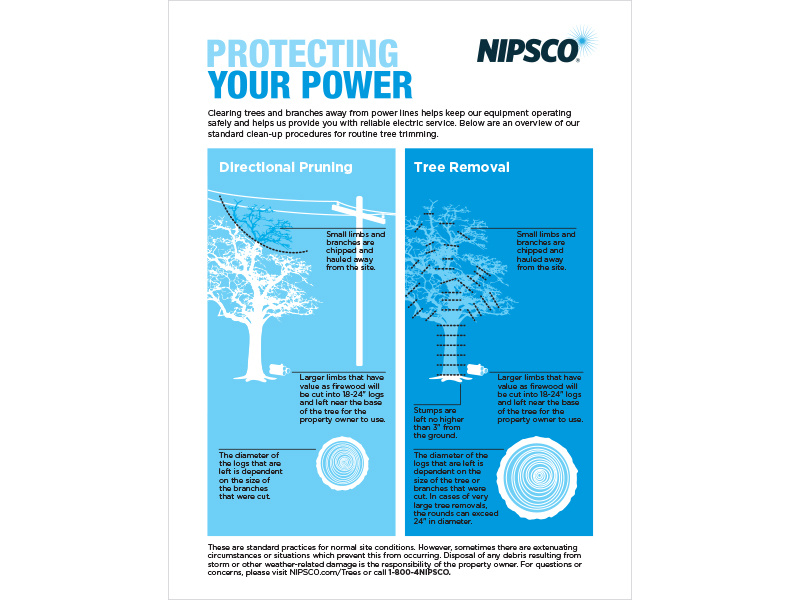Comprehending The Environmental Consequences Of Tree Elimination: Vital Info For You
Comprehending The Environmental Consequences Of Tree Elimination: Vital Info For You
Blog Article
Material Written By-Kryger Mccullough
When it comes to the ecological influence of tree removal, there are crucial facets that require your attention. From the detailed web of relationships within environments to the subsequent results on environment patterns, the repercussions are extensive. You might be shocked to find the elaborate methods which the elimination of trees can reverberate throughout the setting. Stay tuned to untangle the elaborate links and implications of this seemingly uncomplicated act.
Deforestation and Environment Loss
Logging and habitat loss are crucial concerns stemming from tree elimination. When trees are lowered, it interferes with whole environments. Not only are the trees themselves lost, yet the homes and food sources of plenty of plant and animal types are ruined also. Birds lose their nesting websites, animals shed their sanctuary, and insects lose their habitats. The effects surge with the food cycle, impacting killers and victim alike.
Additionally, deforestation contributes to climate adjustment. Trees play a critical function in absorbing carbon dioxide, a greenhouse gas that catches warm in the atmosphere. With fewer trees, there's less co2 absorption, leading to increased degrees of this gas in the atmosphere and worsening global warming.
Environment loss is a direct result of logging, as the devastation of forests implies the loss of unique and diverse environments. Several species are incapable to adjust to fast changes in their environment, causing population declines and, in many cases, extinction.
Shielding forests is important to maintaining the delicate equilibrium of nature and making certain the survival of plenty of plant and pet types.
Impact on Biodiversity
The elimination of trees has a significant effect on biodiversity, affecting the variety and abundance of plant and animal types in a location. https://andersonwgowg.qodsblog.com/33059881/can-trees-be-maintained-indicators-for-necessary-tree-removal give environment and food sources for many organisms, from pests to birds to creatures. When trees are gotten rid of, these types shed their homes and resources of nourishment, resulting in a decrease in their populaces. This disturbance can have plunging results on the entire environment.
Furthermore, trees play a critical role in maintaining biodiversity by developing microhabitats within their canopies, trunks, and roots that support a large range of types. When trees are lowered, these specialized settings are destroyed, lowering the overall diversity of the location.
Furthermore, the elimination of trees can bring about a decline in hereditary diversity within plant populaces, as specific tree varieties might no longer be able to replicate or spread efficiently. Safeguarding trees and woodlands is crucial for protecting biodiversity and making sure the health of ecosystems for future generations.
Dirt Disintegration and Climate Modification
With trees being gotten rid of from a location, the disturbance of soil structure and stability happens, bring about enhanced soil erosion. https://loveland-commercial-prope20875.dailyblogzz.com/33589130/what-occurs-after-tree-elimination-tips-for-your-lawn play a crucial role in stopping erosion by holding dirt in place with their root systems. When trees are eliminated, particularly in great deals, the dirt ends up being much more at risk to erosion from wind and water. This disintegration not just impacts the immediate environments but can also cause sedimentation in neighboring water bodies, influencing water quality and water environments.
Additionally, trees assist manage the environment by soaking up carbon dioxide throughout photosynthesis. When trees are reduced, this all-natural carbon sink is decreased, adding to raised degrees of greenhouse gases in the atmosphere. This can aggravate environment modification, bring about even more severe weather occasions and interruptions in ecosystems worldwide.
Therefore, the elimination of trees not only increases soil disintegration however additionally contributes in the larger ecological issue of climate modification. It's critical to take into consideration these variables when evaluating the influences of tree removal on the atmosphere.
Conclusion
Now that you recognize the ecological effect of tree elimination, consider the consequences prior to reducing trees. https://www.comoxvalleyrecord.com/community/tree-deemed-a-hazard-to-tubers-removed-from-puntledge-river/ , reduces biodiversity, and contributes to soil disintegration and climate adjustment. By being mindful of the impact of tree removal, you can help secure our environment and preserve the fragile balance of nature. Make notified options and take into consideration alternative options to minimize the negative results on our planet.
